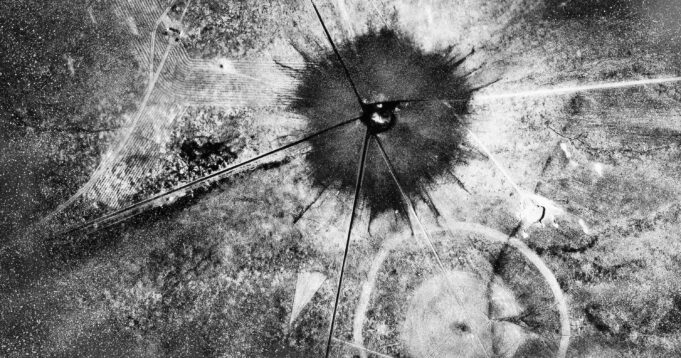A recent study has exposed the widespread devastation caused by the U.S. military’s secretive detonation of its first nuclear bomb in New Mexico with radioactive particles reaching as far as Canada and Mexico.
The study, released in late July ahead of submission to a scientific journal for peer review, shows that the cloud and its fallout went farther than anyone in the Manhattan Project had imagined in 1945, The New York Times reported.
The study’s authors used state-of-the-art modeling software and recently uncovered historical weather data. They stated that radioactive fallout from the Trinity test reached 46 states, Canada and Mexico within 10 days of detonation.
“It’s a huge finding and, at the same time, it shouldn’t surprise anyone,” said the study’s lead author, Sébastien Philippe, who is a researcher and scientist at Princeton University’s Program on Science and Global Security.
The test, which was carried out in New Mexico on July 16, 1945, caused widespread environmental contamination and population exposure. The study was led by the Program on Science and Global Security (SGS), at Princeton University.
The research used “high resolution reanalyzed historical weather fields, U.S. government data, complex atmospheric modeling” in order to understand the distribution of radioactive fallout in the days following the historical nuclear test, according to reports.
According to the research, within a span of 10 days following the nuclear test a mushroom cloud as high as 50,000–70,000 feet was formed dispersing radioactive particles up to Canada and Mexico. Plutonium carried by wind from the location of the Trinity test reached Crawford Lake in Canada on July 20, 1945, the study found.
As a result of the Trinity test, infant mortality in New Mexico shot by 56 percent between 1944 and 1945.
The Trinity test and other nuclear tests that followed were a part of the secret Manhattan program, a United States government project focused on the development of the atomic bomb.
Following Trinity, there were 93 more atmospheric tests conducted in Nevada which saw nuclear fallout distributed across the U.S. by radioactive mushroom clouds.
The report confirms that the United States government also carried 45 “air burst” tests, which involved detonating nuclear bombs tipped on rockets in the Earth’s upper atmosphere.
As per a shocking detail, the U.S. government reportedly had volunteers stand under one such air burst explosion to study the health impacts it would have on the individuals exposed directly to the deadly nuclear radiation. From 1945 to 1962, the time period analyzed by the researchers, there were 101 nuclear tests conducted by the U.S. military.
Myriad underground nuclear weapons which have not been included in the study form a significant portion of the U.S. nuclear arms.
During 1951-1998, Washington blew up more than 800 subterranean nuclear weapons, the Libertarian Institute reported.
Philippe said, “Our results show the significant contribution of the Trinity fallout to the total deposition density across the contiguous U.S. … and in New Mexico in particular.”
“How much of Trinity’s fallout still remains at original deposition sites across the country is difficult to calculate,” said Susan Alzner, an author of the study.
Almost 500,000 people lived within 150 miles of Trinity’s explosion. Some families lived as close as 12 miles away. Yet no civilians were warned about the test ahead of time, and they weren’t evacuated before or after the test, the New York Times reported.
The U.S. government lied to the locals about the explosion saying that it was an accident that occurred at a neighboring ammunition depot. The victims were afflicted with various diseases including cancer and are paying the price ever since.
According to Responsible Statecraft, a U.S. think tank, “When the initial shock wore off, [locals] returned to their daily lives. They drank from cisterns full of radioactive debris, ate beef from cattle that had grazed on the dust for weeks on end, and breathed air full of tiny plutonium particles. Only later would the real impact become clear.”
The study also documents significant radioactive deposition in other U.S. states including Nevada, Utah, Wyoming, Colorado, Arizona, and Idaho, as well as dozens of federally recognized tribal lands.
On August 9, 1945, a replica of the plutonium-239 implosion device tested in Trinity, was dropped on Nagasaki by the United States. This bomb called “Fat Man” instantly killed about 40,000 people, and at least 30,000 more died due to injuries and radiation poisoning by the end of that year.
On August 6, 1945, almost a month after the Trinity test, the U.S. dropped a uranium-235 gun assembly bomb, known as the “Little Boy,” on the Japanese city of Hiroshima. The bomb killed 70,000 people immediately, and due to subsequent exposure to nuclear radiation, the death toll rose to more than 135,000. (PressTV)













